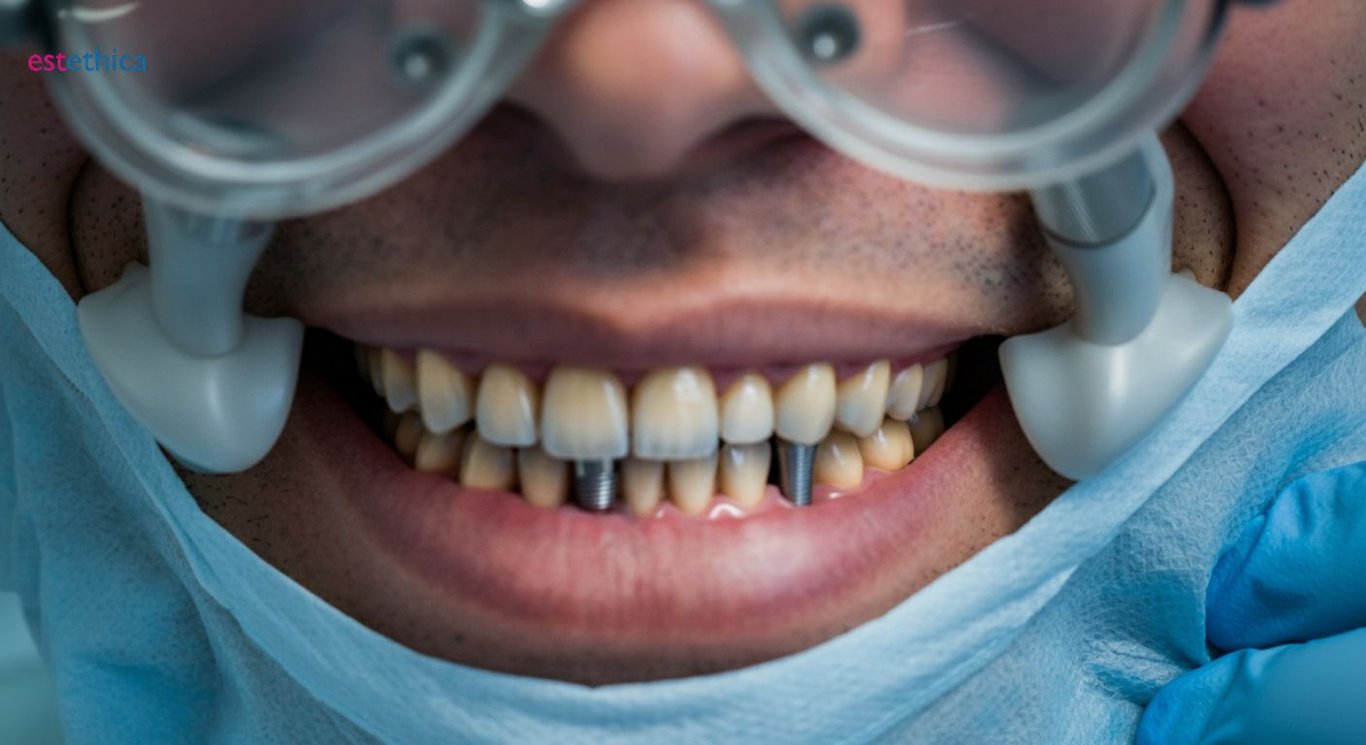Unlocking the Secrets of Dental Implants: Your Essential Guide
Discover everything you need to know about dental implants to make an informed decision and regain your smile.
Dental implants are revolutionizing oral health care, providing a reliable and long-lasting solution for replacing missing teeth. As the demand for dental implants rises due to their effectiveness and durability, understanding the intricacies of this procedure becomes crucial. This comprehensive guide unveils everything you need to know about dental implants, from the benefits they offer to the latest technological advancements in implant surgery.
Understanding What a Dental Implant Is and Its Benefits
Key Features of Dental Implants
- Stability: Dental implants integrate with the jawbone, providing a secure foundation.
- Durability: With proper care, implants can last a lifetime, unlike other dental restorations.
- Aesthetic Appeal: Implants offer a natural look, closely mimicking real teeth.
Dental implants are a revolutionary solution for those seeking a permanent alternative to dentures. Unlike traditional dentures, which can slip or cause discomfort, implants are securely anchored into the jawbone. This integration not only ensures stability but also helps in maintaining the jawbone's integrity, preventing bone loss over time. For instance, a patient who opts for implants over dentures often experiences improved oral function, allowing them to eat and speak with confidence.
The Implant Surgery Process
- Consultation: A thorough examination to assess suitability for implants.
- Surgical Placement: The implant is surgically inserted into the jawbone.
- Healing and Integration: The bone heals around the implant, securing it in place.
The process of getting a dental implant involves several stages, each crucial for the success of the procedure. Initially, a consultation is conducted to determine if the patient is a suitable candidate. This is followed by the surgical placement of the implant, which is a precise procedure requiring expert skill. After placement, a healing period allows the bone to integrate with the implant, forming a stable base for the prosthetic tooth. This meticulous process ensures that the implant functions just like a natural tooth, providing both aesthetic and functional benefits.

The Step-by-Step Process of Implant Surgery Explained
Understanding the Healing Phase
The healing phase is crucial in implant surgery, allowing the titanium post to integrate with the jawbone. This process, known as osseointegration, typically takes several months. During this time, the bone grows around the implant, securing it firmly in place. This integration is vital for the stability and longevity of the dental implant, ensuring it functions like a natural tooth.
Connecting the Abutment and Prosthetic Tooth
Once osseointegration is complete, the next step involves attaching an abutment to the implant. This small connector piece serves as the base for the prosthetic tooth. The custom-made artificial tooth, designed to match the patient's natural teeth, is then secured onto the abutment. This final step completes the dental restoration, providing both aesthetic and functional benefits.
Key Considerations for Successful Implant Surgery
- Bone Health: Adequate bone density is essential for implant stability.
- Oral Hygiene: Maintaining good oral hygiene prevents complications.
- Regular Check-ups: Follow-up visits ensure the implant's success.
Successful implant surgery relies on several factors, including the patient's bone health and commitment to oral hygiene. Regular dental check-ups are also crucial, allowing the dentist to monitor the implant and address any issues promptly. These considerations help ensure the longevity and effectiveness of the dental implant.
The Implant Surgery Timeline
- Initial Examination: Assessing oral health and planning the procedure.
- Implant Placement: Surgically inserting the titanium post.
- Healing and Integration: Allowing time for osseointegration.
- Abutment and Prosthetic Attachment: Completing the restoration.
The timeline for implant surgery varies depending on individual healing rates and specific treatment plans. Each stage is essential for achieving a successful outcome, ensuring the dental implant functions seamlessly as part of the patient's oral structure.

Essential Care Tips for Maintaining Your Dental Implants
Daily Habits for Long-Lasting Implants
Maintaining dental implants requires consistent daily care. Brushing twice a day with a soft-bristle toothbrush helps remove plaque and prevent gum disease. Flossing around the implant is equally important to eliminate debris and reduce the risk of infection. Using an antimicrobial mouthwash can further enhance oral hygiene by targeting bacteria that brushing and flossing might miss.
Foods to Avoid for Implant Longevity
- Hard Foods: Avoid biting into hard foods like nuts or ice to prevent damage.
- Sticky Sweets: Limit consumption of sticky candies that can adhere to implants.
- Acidic Beverages: Reduce intake of acidic drinks to protect the implant's surface.
Choosing the right foods can significantly impact the lifespan of dental implants. Hard foods can cause fractures, while sticky sweets may lead to plaque buildup. Additionally, acidic beverages can erode the implant surface, compromising its integrity over time.
Regular Check-Ups and Professional Cleanings
- Bi-Annual Dental Visits: Schedule check-ups every six months for professional evaluation.
- Professional Cleanings: Ensure thorough cleaning to remove tartar and plaque.
- Monitoring Implant Health: Dentists can detect early signs of complications.
Regular dental visits are crucial for maintaining implant health. During these appointments, dentists can perform professional cleanings to remove tartar and plaque that regular brushing might miss. They also monitor the implant for any signs of complications, ensuring early intervention if needed.

Exploring the Latest Innovations in Dental Implant Technology
The Role of 3D Printing in Implant Surgery
3D printing has revolutionized dental implant procedures by enabling precise customization of implants. This technology allows for the creation of patient-specific models, ensuring a perfect fit and reducing surgery time. For example, a patient with a unique jaw structure can benefit from a 3D-printed implant tailored to their anatomy, enhancing both comfort and functionality.
Digital Imaging for Enhanced Planning
Digital imaging plays a crucial role in the planning stages of implant surgery. Advanced imaging techniques, such as cone beam computed tomography (CBCT), provide detailed views of the jawbone and surrounding structures. This comprehensive visualization aids in accurate implant placement, minimizing risks and improving outcomes. For instance, a dentist can use digital imaging to identify the optimal implant site, avoiding critical nerves and ensuring a successful procedure.
Advantages of Latest Technologies
- Precision: Technologies like 3D printing offer unmatched accuracy in implant design.
- Efficiency: Digital tools streamline the planning process, reducing surgery time.
- Patient Satisfaction: Customized solutions lead to better comfort and aesthetic results.
These technological advancements not only enhance the precision and efficiency of implant surgeries but also significantly boost patient satisfaction. By leveraging these innovations, dental professionals can offer tailored solutions that meet individual needs, resulting in improved overall experiences.
Steps in Implementing New Technologies
- Assessment: Evaluate the patient's specific needs and jaw structure using digital imaging.
- Customization: Design a personalized implant using 3D printing technology.
- Execution: Perform the implant surgery with precision tools and techniques.
The integration of these technologies into dental practices involves a systematic approach. Initially, a thorough assessment using digital imaging is conducted to understand the patient's unique requirements. This is followed by the customization of the implant, ensuring a perfect fit. Finally, the surgery is executed with precision, utilizing advanced tools to achieve optimal results.
The Cost and Accessibility of Dental Implants
Factors Influencing Dental Implant Costs
Several elements contribute to the cost of dental implants, making them more accessible than before. Geographic location plays a significant role, as prices can vary between urban and rural areas. Additionally, the complexity of the case, such as the need for bone grafting, can influence the overall expense. The materials used, including the type of implant and prosthetic tooth, also affect the cost. These factors combined determine the final price, which can be managed through various financing options.
Enhancing Accessibility Through Financing and Insurance
Financing options and insurance coverage are crucial in making dental implants more accessible. Many dental clinics offer payment plans that allow patients to spread the cost over time, reducing the immediate financial burden. Insurance policies may cover part of the procedure, depending on the plan and provider. These financial aids enable more individuals to consider implants as a viable option for dental restoration.
Key Considerations for Choosing a Dental Implant Provider
- Reputation: Research the clinic's reputation and patient reviews.
- Experience: Consider the experience and qualifications of the implant dentist.
- Technology: Ensure the clinic uses the latest dental technologies.
Choosing the right dental implant provider involves several considerations. Evaluating the clinic's reputation through patient reviews can provide insights into their service quality. The experience and qualifications of the implant dentist are crucial for successful outcomes. Additionally, selecting a clinic that utilizes the latest dental technologies can enhance the precision and effectiveness of the procedure.
Steps to Improve Implant Accessibility
- Research: Gather information on local clinics and their offerings.
- Consultation: Schedule consultations to discuss treatment options and costs.
- Financial Planning: Explore financing options and insurance coverage.
Improving accessibility to dental implants involves a strategic approach. Start by researching local clinics to understand their services and reputation. Scheduling consultations allows for a detailed discussion of treatment options and associated costs. Finally, exploring financing options and insurance coverage can help manage the financial aspect, making implants a more feasible choice for many patients.
Addressing Common Concerns: Safety and Longevity
Ensuring the Safety of Dental Implants
Dental implants boast a remarkable success rate of over 95%, making them a safe option for individuals in good health. This high success rate is attributed to advancements in implant technology and surgical techniques. For instance, the use of biocompatible materials like titanium ensures that the implant integrates well with the jawbone, minimizing the risk of rejection or complications. Additionally, thorough pre-surgical assessments help identify any potential health issues that could affect the implant's success, ensuring a tailored approach for each patient.
Factors Contributing to Implant Longevity
- Material Quality: High-grade materials enhance durability and reduce wear.
- Proper Care: Consistent oral hygiene practices extend the implant's lifespan.
- Regular Monitoring: Routine dental check-ups ensure early detection of issues.
Several factors contribute to the longevity of dental implants, with material quality being a primary consideration. Implants made from high-grade materials are less prone to wear and tear, ensuring they remain functional for many years. Proper care, including regular brushing and flossing, is essential to prevent gum disease, which can compromise the implant's stability. Regular dental check-ups allow for early detection and management of any potential issues, further extending the implant's lifespan.
Steps to Maximize Implant Lifespan
- Adopt a Rigorous Oral Hygiene Routine: Brush and floss daily to maintain gum health.
- Schedule Regular Dental Visits: Bi-annual check-ups help monitor implant condition.
- Follow Dietary Recommendations: Avoid foods that could damage the implant.
Maximizing the lifespan of dental implants involves a proactive approach to oral care. Adopting a rigorous oral hygiene routine, including daily brushing and flossing, is crucial for maintaining healthy gums and preventing infections. Scheduling regular dental visits allows for professional monitoring and cleaning, ensuring any issues are addressed promptly. Following dietary recommendations, such as avoiding hard or sticky foods, helps protect the implant from damage, contributing to its longevity.
Revolutionizing Dental Implants with 3D Printing and Digital Imaging
Ensuring Optimal Outcomes Through Comprehensive Implant Care
Frequently Asked Questions
What are the benefits of dental implants compared to traditional dentures?
What is the process of dental implant surgery?
How can I ensure the longevity of my dental implants?
What are the latest technological advancements in dental implant procedures?
Are dental implants safe, and what factors contribute to their success?
Discover the path to 'Healthy Beauty' with estethica's expert care. Call now for your free consultation and take the first step towards a more confident you!
📞 Call for Your Free Consultation